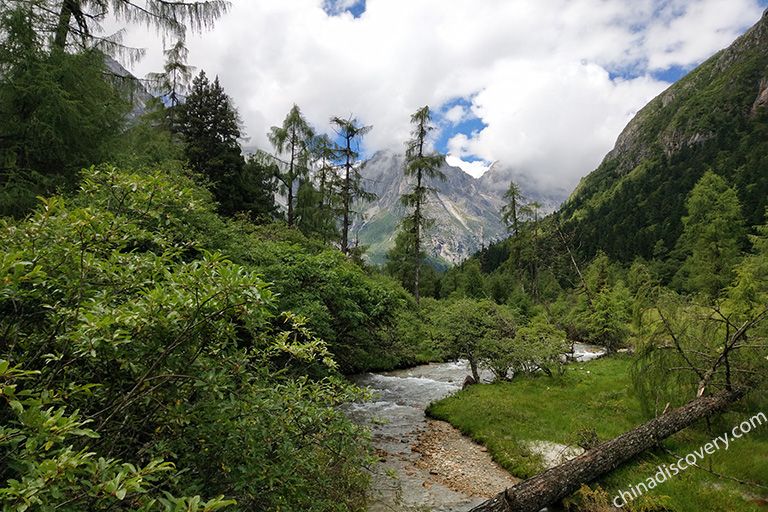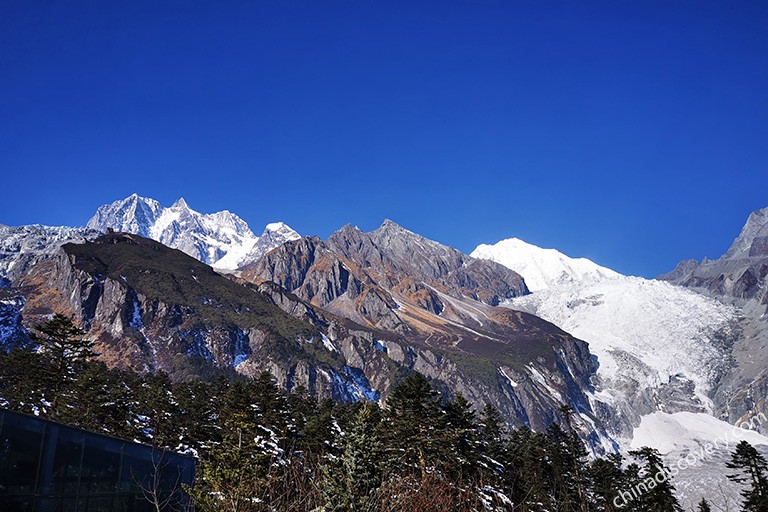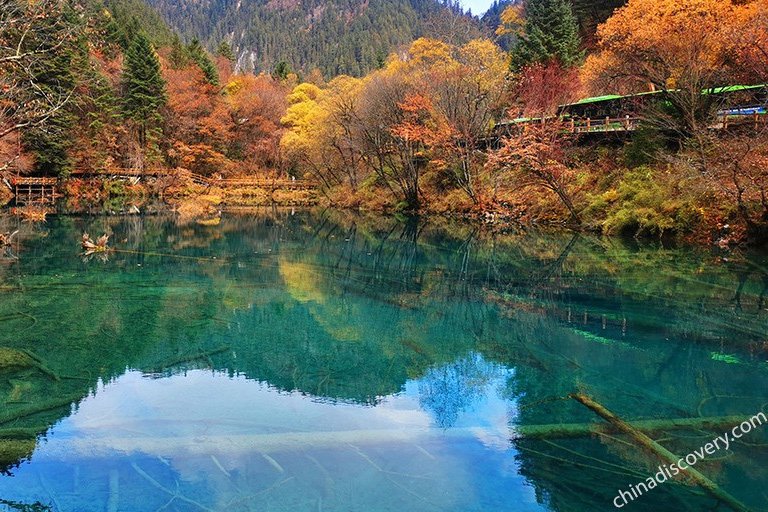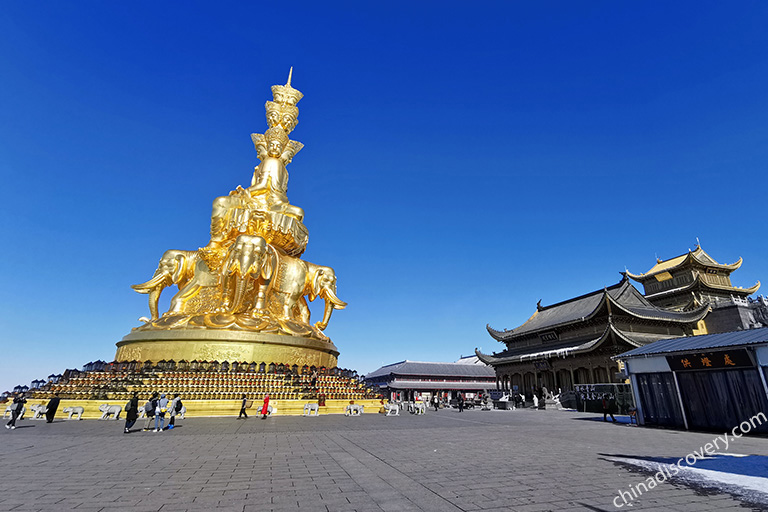Sichuan World Heritage Sites - Top Class Treasures in Sichuan
World Heritage sites, recognized by The United Nations Educational, Scientific and Cultural Organization (UNESCO), are cultural or natural or both natural and cultural sites of Exceptional Universal Value. These sites are important and significant across countries and generation. Till the end of 2019, China has 55 UNESCO World Heritage sites, ranking first in the world. Among these 55 sites, there are five sites located in Sichuan, including Jiuzhaigou Valley, Huanglong National Park, Mount Emei Scenic Area (including Leshan Giant Buddha Scenic Area), Qingcheng Mountain (together with Dujiangyan Irragation System) as well as Sichuan Giant Panda Sanctuaries (Wolong, Mt Siguniang and Jiajin Mountains).
Table of Contents
- Jiuzhaigou Valley - Fairytale Land in Earth
- Huanglong National Park - Unmissable Site Near Jiuzhaigou
- Leshan Giant Buddha - Largest Buddha Statue in the World
- Mount Emei - Sacred Buddhist Mountain with Natural Beauty
- Mount Qingcheng - Important Taoist Centre in ChinaD
- Dujiangyan Irrigation System - Magical Ecological Engineering Feast
- Sichuan Giant Panda Sanctuaries - Flagship for Giant Panda Conservation
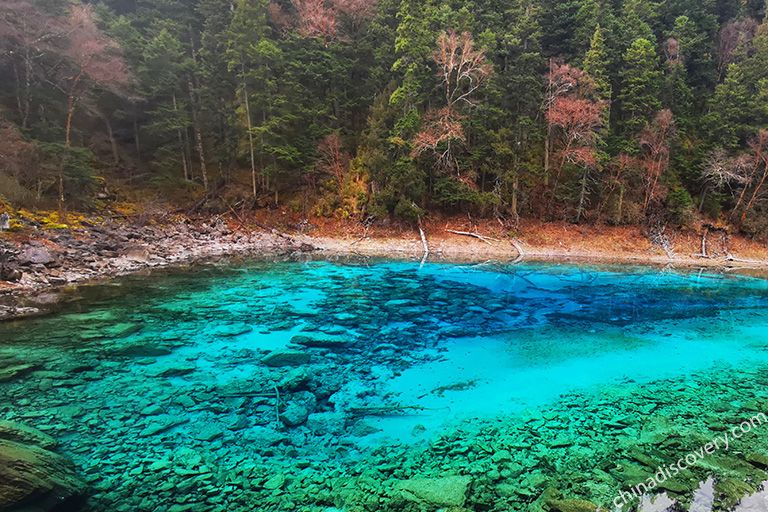
Jiuzhaigou National Park

Beautiful Waterfall in Jiuzhaigou National Park
Type: Geopark, Nature
Best Travel Time: June to Next February, especially June to November
Recommended Visiting: 1~2 days
Opening Hours: 07:00-18:00
Special Experience: Photography & Hiking
Address: Zhangzha Town, Jiuzhaigou County, Aba Autonomous Prefecture, Sichuan (四川省阿坝藏族羌族自治州九寨沟县漳扎镇)
Jiuzhaigou, literally meaning Nine Villages Valley, gets its name of the nine Tibetan villages located in the valley. Located in the northern area of Sichuan, Jiuzhaigou Valley is about 440 km away from Chengdu. It is titled as a World Natural Heritage site, National Geopark, World Biosphere Reserve, National AAAAA Scenic Area, as well as China’s first Nature Reserve set up for natural landscape protection. Despite the Ms 7.0 earthquake struck Jiuzhaigou Valley in 2017, the miraculous nature of Jiuzhaigou Valley recovered to its best soon.
Jiuzhaigou Valley becomes world-famous as Fairyland because of its authentic and aesthetic beauty. As you step into the fairyland, you must be attracted by its various kinds of incredible waterscape - multi-colored lakes, tinkling streams, popping waterfalls as well as the spectacular surrounds. The whole valley of Jiuzhaigou shapes like a huge “Y” with Zechawa Valley in right branch, Rize Valley in right branch and Shuzheng Valley in lower branch. Crystal clear and bluer-than-bluer lakes, waterfalls with different scales and old-growth trees are distributed in the three valleys. Jiuzhaigou Valley presents its most striking majesty in autumn when the forest is colored into a mixed hue of yellow, golden, orange and red. When Jiuzhaigou Valley is covered with white snows in winter, a visit to Jiuzhaigou Valley will give you lasting memories of the pure landscape as well.
How to Get There
Generally, most travelers start a Jiuzhaigou tour from Chengdu - Sichuan’s capital which city can be easily reached by international/domestic flights and high speed trains. Chengdu Shuangliu Airport operates daily nonstop flights to Jiuhuang (Jiuzhaigou-Huanglong) Airport, taking only about 1 hour. If you want a more cost-effective way, you can take a long distance bus from Xinnanmen Bus Station (新南门汽车站) or Chadianzi Bus Station (茶店子汽车站) to Jiuzhaigou Jiutong Bus Station (九通客服中心) which is only 1 km away from Jiuzhaigou Valley.
Some top destinations in China also operate direct flights to Jiuzhaigou, including Chongqing, Beijing, Xian, Hangzhou and Mianyang for your choice.
Helpful Links: How to Get to Jiuzhaigou | Chengdu to Jiuzhaigou Transfer | Xian to Jiuzhaigou Transfer | Jiuzhaigou Weather | Jiuzhaigou Maps | How to Plan Jiuzhaigou Trip
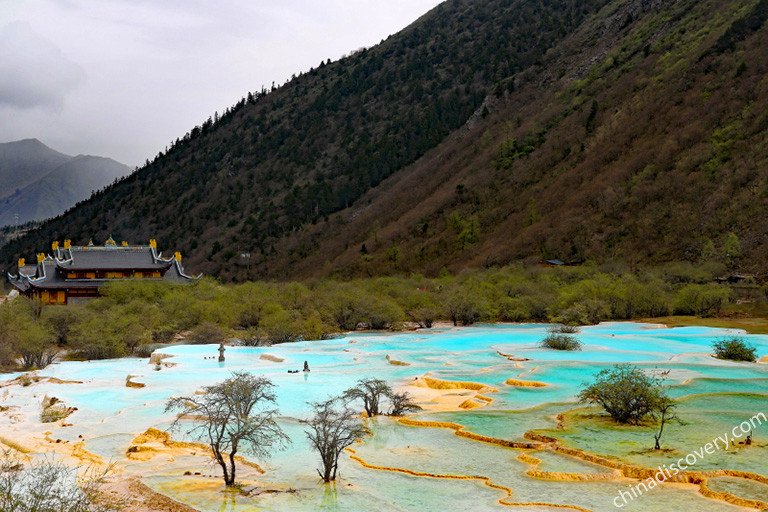
Five-color Ponds in Huanglong National Park

Waterfalls in Huanglong National Park
Type: World Natural Heritage Site, Geopark, Nature
Best Travel Time: July to November
Recommended Visiting: 0.5 ~ 1 day
Opening Hours: 08:00-16:00
Address: Pingsong Road, Songpan County, Aba Autonomous Prefecture, Sichuan (阿坝藏族羌族自治州松潘县平松路)
Huanglong Valley is a gentle-slope valley with a length of 7.5 kilometers and a width of 1.5 kilometers. Because of the vast yellow travertine landforms making the valley like a Yellow Dragon, so Huanglong (translated as Yellow Dragon) gained its name. Huanglong National Park, about 110 km away from Jiuzhaigou Valley, is another World Natural Heritage site in northern Sichuan. Huanglong National Park now is notable as World Natural Heritage, World Biosphere Reserve, and Green Globes 21.
With countless everlasting snow-capped peaks, colorful terraced ponds, awe-inspiring waterfalls and amazing limestone formations, Huanglong National Park is always called Wonder on the World and Heaven on the Earth by travelers. Its natural essence must be Five-color Pool located in the upper valley, comprising 693 well-arranged travertine ponds. When the sun shines in the ponds, the crystal clear water takes on fascinating colors of blue, white, green and purple. Huanglong Cave is also a highlight of the park. Located near Huanglong Temple, this travertine cave is full of stalactites, including three natural Buddhist statues.
Tips: 1) Many travelers visit Huanglong National Park to admire its superlative natural property before or after a Jiuzhaigou trip. 2) You are suggested to go up by cable car to save your energy and then descend the valley by hiking. 3) The altitude of Huanglong National Park ranges from 3,300 to 3,500 meters, and it is important to prepared well for the high altitude sickness.
How to Get There
Just as Jiuzhaigou Valley, most travelers get there from Chengdu. Huanglong National Park is just about 40 km away from Jiuhuang Airport, so you can easily drive or take a one hour’s shuttle bus to the park after landing in the airport. Usually, there is a daily bus running from Jiutong Bus Station (close to Jiuzhaigou Valley) to Huanglong National Park as well.
Helpful Links: Best Time to Visit Huanglong | Airport to Huanglong Transfer | Jiuzhaigou to Huanglong Transfer

Magnificent View of Leshan Giant Buddha

Seeing Leshan Giant Buddha in Close Distance
Type: World Heritage Site, Buddhist Site
Best Travel Time: All the year round
Recommended Visiting: Half day
Opening Hours:07:30 ~ 18:30 (April 1 ~ October 7); 08:00 ~ 17:30 (October 8 ~ March 31)
Special Experience: Hiking & Boating
Address: No.2435 Lingyun Street, Shizhong District, Leshan, Sichuan (乐山市市中区凌云路中段2435号)
Leshan Giant Buddha, located in Leshan city and with day-trip’s distance from Chengdu, is a huge Buddha statue listed in UNESCO World Natural and Cultural Heritage sites together with Mount Emei. It was originally caved out of the hill to suppress the flood which wreaked frequently in Leshan area where three rivers (Min River, Qingyi River and Dadu River) joint. The construction began in 713 AD and lasts for 90 years. With a height of 71 meters, it is known as the largest Buddha statue in the world. Even its insteps can hold over one hundred persons.
There are two main ways to explore Leshan Giant Buddha - walking close to him and overviewing him from a boat or cruise. Walking in the Leshan Giant Buddha Scenic Area and taking a close sight of the Buddha is the most popular way to see it. You can hike up on Lingyun Mountain and watch the Buddha opposite his head first, and then hike downstairs to feet through the zigzagging Nine Bends Plank Road. At the foot of Leshan Giant Buddha, you can fully admire his majesty. To avoid the crowds in the mountain (especially in holidays), it will be a better choice to enjoy a relaxing boat experience to take a panoramic view of the Buddha and the mountain.
How to Get There
Chengdu acts as the best gateway to Leshan Giant Buddha. Leshan Giant Buddha is about 140 kilometers away from Chengdu, and you can transfer between them by high speed train, long-distance bus or driving. Chengdu East Railway Station, Chengdu South Railway Station and Chengdu Shuangliu Airport run high speed trains to Leshan Railway Station. Within another 30 minutes’ driving, you can reach Leshan Giant Buddha from Leshan Railway Station. There are frequent daily buses running from Xinnanmen Bus Station to Leshan as well. Upon arrival, you can take a bus or call a taxi to Leshan Buddha. Private driving is the best way to get rid of the hustle of public transfer.
Helpful Links: How to Get to Leshan | Leshan Weather | Where to Stay in Leshan | Leshan Maps

Golden Summit of Mount Emei in Winter

Splendid View from Golden Summit
Type: World Heritage Site, Buddhist Mountain
Best Travel Time: June to November
Recommended Visiting: 1~3 days
Opening Hours: 07:30 ~ 18:30 (April 1 ~ October 7); 08:00 ~ 17:30 (October 8 ~ March 31)
Special Experience: Hiking, Pilgrimage, Photography, Kungfu Experience
Address: NO. 41 Minshan South Road, Emeishan City, Leshan City, Sichuan Province (四川省乐山市峨眉山市岷山东路41号)
Mount Emei, located in Emeishan city, is listed in UNESCO World Natural and Cultural Heritage sites together with Leshan Giant Buddha for its cultural significance and natural beauty. As one of China’s Four Sacred Buddhist Mountain and the ashram for Samantabhadra Bodhisattva, it plays an important role in Chinese Buddhism. It is believed that the first Buddhist temple of China was built in Mount Emei.
This holy mountain is a great place to discover the Buddhist culture. There are 30 Buddhist temples scattered in the evergreen forests, including Baoguo Temple, Wannian Temple, Qingyin Pavilion, Fuhu Temple, etc. All the temples with different history and legendary own their own features. In addition to its cultural appeal, Mount Emei is also outstanding for its natural treasures - diverse vegetation ranging from subtropical to subalpine pine forests. Its most incredible scenery appears in the Golden Summit where sunrise, sunset, sea of cloud, distant snow-capped peaks as well as golden statue of the ashram for Samantabhadra Bodhisattva can be savored. Everybody could soothe his soul in this peaceful and holy site.
More than sightseeing and cultural experience, Mount Emei offers some other experiences to travelers, like hiking, photograph, Kung Fu, hot spring, snow fun, etc.
Tips: 1) Mount Emei is vast, and you are suggested to take advantage of cable cars and Eco-buses to shorten your long hiking to Golden Summt. 2) It will be helpful to wear antiskid crampon if you travel in winter, because the road to the mountain top may be very slippery.
Helpful Links: How to Get to Emei Mountain | Emeishan Weather | Where to Stay in Emeishan | Emeishan Maps | Things to Do in Mount Emei |
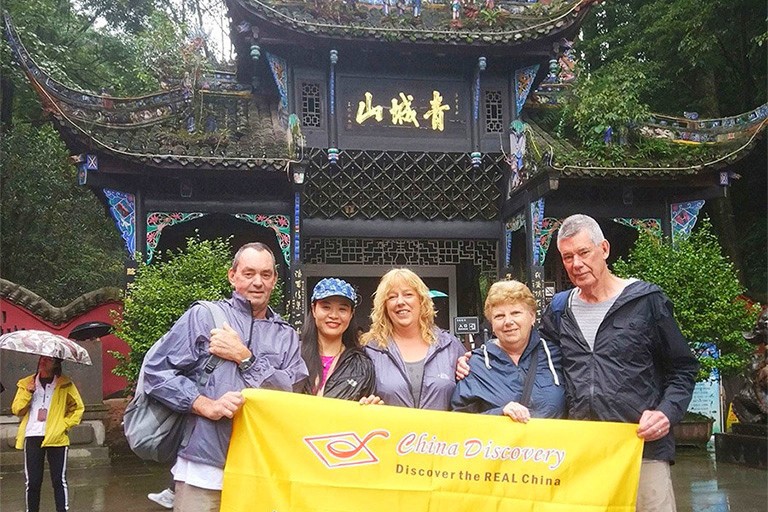
Our Clients Visiting Mount Qingcheng
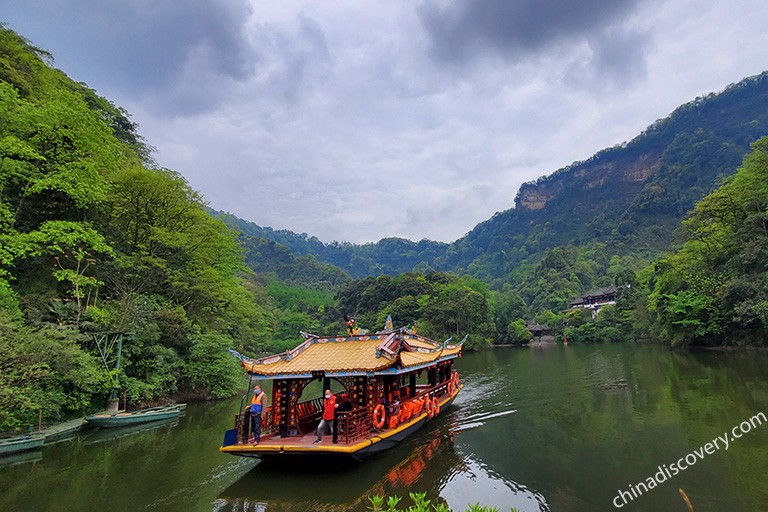
Lake in Mount Qingcheng
Type: World Heritage Site, Taoist Mountain, Nature
Best Travel Time: June to October
Recommended Visiting: Half day for Front Mountain & Half day for Back Mountain
Opening Hours: March 2nd ~ November 30th: 8:00 to 17:00 / December 1st ~ March 1st: 8:00 to 18:00
Address: Qingcheng Mountain Town, Dujiangyan, Chengdu, Sichuan (四川省成都市都江堰市青城山镇)
Mount Qingcheng (together with Dujiangyan Irrigation System) was inscribed on the World Cultural Heritage List by UNESCO in 2000. Because of the long history and rich Taoist atmosphere, it gets its reputation of one of the cradles of Taoism, one of China’s Four Scared Taoist Temples and one of Chengdu’s Top 10 Scenes. The whole mountain of Mt. Qingcheng can be divided into Front Mountain and Back Mountain while the former features in historical cultural sites and the latter is attractive with tranquil and impressive landscape.
Most people travel to Front Mountain to soak up Taoist culture. There are a dozen of Taoist temples perched in the luxury forest of the mountain, most famed ones including Jianfu Palace, Zushi Pavilion, Laojun Pavilion, Shangqing Pavilion, Tianshi Celestial Cave, etc. Hiking among these temples allows you to be indulged in Taoist civilization as well as get awed by the magnificent Chinese temple architectures. It will also be an enjoyable experience to take a boat across Yuecheng Lake which is located in the middle of the mountain.
Tips: Cable car is equipped in both Front Mountain and Back Mountain. If you are not a serious hiker, taking a cable car will be much energy-saving and time-effective.
How to Get There
Located only about 68 km away from Chengdu, Mount Qingcheng can be reached quite easily. There are frequent high speed trains from Chengdu (Chengdu North Railway Station and Xipu Railway Station) to Qingchengshan Railway Station (within 3 kilometers’ distance to Mount Qingcheng) every day. You can take a bus or call a taxi to the scenic area. Tourists can also take a bus from Chadianzi Bus Station to Dujiangyan Bus Station and take another bus to Mount Qingcheng.
Helpful Links: Mount Qingcheng Hiking | Mount Qingcheng Map
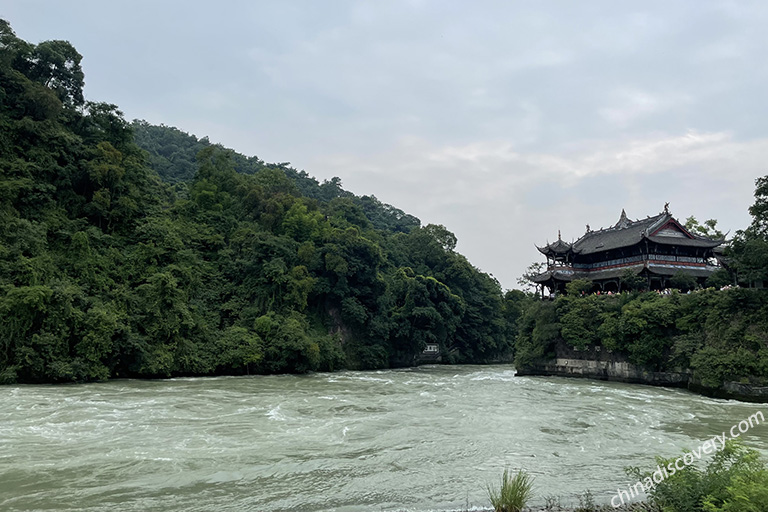
Charming Baopingkou of Dujiangyan Irrigation System
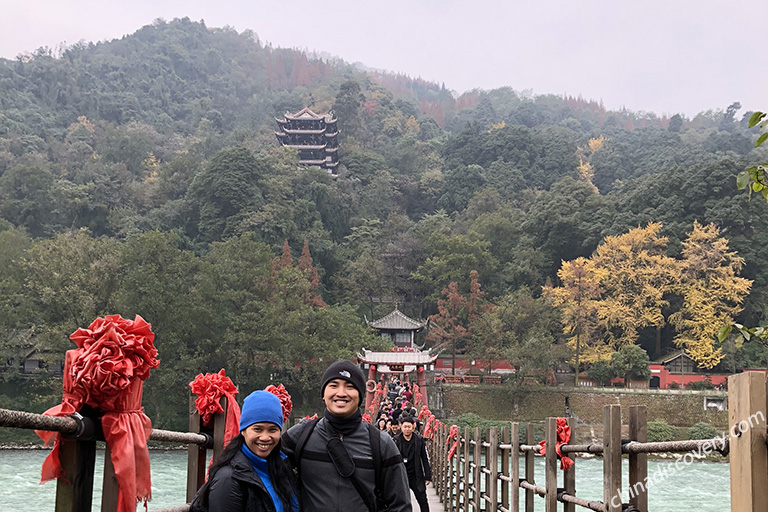
Anlan Bridge across the River
Type: Bodies of Water, World Cultural Heritage
Best Travel Time: April to October
Recommended Visiting: Half day
Opening Hours: March 2nd ~ November 30th: 8:00 to 18:00 / December 1st ~ March 1st: 8:00 to 17:30
Address: On the Minjiang River at the west of Dujiangyan, Chengdu, Sicuan (四川省成都市都江堰市西)
Dujiangyan Irrigation System is a time-honored irrigation system built around 256 BC (Qin Dynasty) by Li Bing - the current governor of Shu (Chengdu) and his son. Originally, Min River rushed down from Min Mountains and slow down abruptly after reaching Chengdu, causing annual flood in the nearby areas. Li Bing smartly harnessed the river by dividing the water into outer river and inner river rather than damming it. The inner river was distributed to the fertile farmland of Chengdu plains and making Chengdu the Land of Abundance. The water project is still in use today to irrigate Chengdu Plain. In 2000, Dujiangyan Irrigation System and Mount Qingcheng are collectively recognized as World Cultural Irrigation System by UNESCO. It is also known as one of the Three Greatest Hydraulic Engineering Projects of Qin Dynasty.
Visiting Dujiangyan Irrigation System, you can admire the great manmade project. The three main parts of the water project include Yuzui, Feishayan and Baopingkou with different functions to manage the water. Apart from the irrigation system itself, there are some other attractions for your discovery, like Erwang Temple, Fulong Temple, Yulei Mountain and Anlan Suspension Bridge.
In addition to traveling Dujiangyan Irrigation System, many travelers like to vist Dujiangyan Panda Base and Mount Qingcheng together as well.
How to Get There
Dujiangyan Irrigation System is located in western Dujiangyan, about 60 km away from Chengdu downtown. It is available to take a high speed train from Xipu Railway Station or Chengdu North Railway Station to Dujianyan Railway Station firstly, and then take a public bus to the Dujiangyan Irrigation System Scenic Area. If you take a flight to Chengdu, you can also take a shuttle bus from Chengdu Shuangliu Airport to Dujiangyan directly.
Helpful Links: How to Get to Dujiangyan | Dujiangyan Weather | Where to Stay in Dujiangyan | Dujiangyan Maps

Pandas in Wolong Panda Reserve
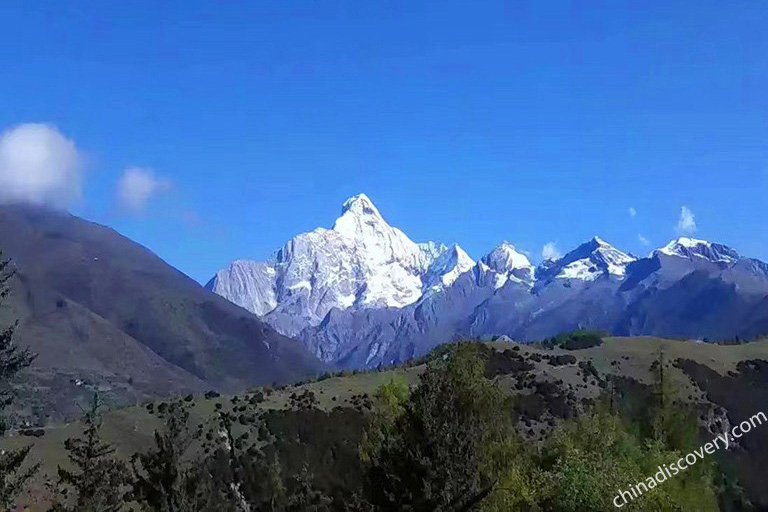
High-soaring Peaks of Mount Siguniang
Sichuan Giant Panda Sanctuaries, located in southwest Sichuan, is not a single area but a group of nature reserves and parks to refuge endangered Giant Pandas. It acts as one important site for captive breeding of Giant Pandas - the national treasure of China, as well as some other highly endangered animals, like Red Panda, Snow Leopard, Clouded Leopard. Moreover, it is also the home to thousands of endemic and threatened species of flora, such as magnolias, bamboos, rhododendrons, and orchids... The sanctuaries totally contains seven nature reserves (Wolong Nature Reserve, Fengtongzhai Nature Reserve, Mt. Siguniang Nature Reserve, Laba River Nature Reserve, Anzihe Nature Reserve, Heishui River Nature Reserve, Jintang-Kongyu Nature Reserve, Caopo Nature Reserve) and Nine Scenic Parks (Mt. Qingcheng-Dujiangyan Scenic Park, Mt. Tiantai Scenic Park, Mt. Siguniang Scenic Park, Xiling Snow Mountain Scenic Park, Mt. Jiguan-Jiulonggou Scenic Park, Mt. Jiajin Scenic Park, Miyaluo Scenic Park (Bipenggou Valley included), Mt. Lingzhen-Mt. Daxue Scenic Park, Mt. Erlang Scenic Park. All of them hold great importance to protect Giant Pandas.
There are two panda bases in Sichuan Giant Panda Sanctuaries, namely Shenshuping Panda Base (in Wolong) and Dujiang Panda base, where you can not only see Giant Pandas at different ages but also enjoy a Panda Volunteer Program. Shenshuping Panda Basle also offers outdoor trekking research in its panda wild training area.
Apart from seeing giant pandas, you get a lot of things to do in Sichuan Giant Panda Sanctuaries, like hiking or appreciating the natural beauty in Siguniang Scenic Area and its three beautiful valleys, joining in snow activities in Xiling Snow Mountain, or taking an adventure in Erlang Mountain, etc.
Helpful Links: Wolong Panda Reserve | Mount Siguniang | Hailuogou Glacier Park | Xiling Snow Mountain | Bipenggou Valley
How to Plan Sichuan World Heritage Tour
Traveling Sichuan World Heritage sites can be easy but planning ahead can make most of your holiday. It is advised to start your tour from Chengdu - the capital city and tourist distribution center of Sichuan. For these travelers who have a 2~3 days’ stay in Sichuan or want to make full use of 144-Hour Transit Visa Free, you can spend 1~2 days traveling Chengdu first and then take a side trip to Leshan (Leshan Giant Buddha and Mount Emei) or Dujiangyan (Dujiangyan Panda Base, Dujiangyan Irrigation System and Mount Qingcheng). If you are thirsty for astonishing natural splendor, you can take a flight to Jiuzhaigou to see Jiuzhaigou Valley and Huanglong National Park. Of course, Sichuan is vast with natural and cultural glory to explore. If your time permits, you can stay there as long as you can.
Based in Chengdu, we are specialized in offering high-quality private tour packages to all travelers who have desires to have an authentic China discovery. From the moment you have a travel plan to the moment you finish your China tour, we are always here at your service. Before your travel, you will be provided with our one-to-one consulting service as well as all itineraries-covered tickets-booking and hotels-booking. During your tour, our knowledgeable local tour guide and skilled driver will pick you up and escort you to your hotel and every attraction without any hustle of public transportation and troublesome navigation. All details will be taken care of, and you just need to focus on sightseeing.
Start planning your tailor-made holiday to China by contacting one of our specialists. Once inquired, you’ll get a response within 0.5~23.5 hours.
Customize a TripHave a question? Get answers from our travel experts or guests
- Your Question:
- Your Name:
- Your Email:
- Submit



























